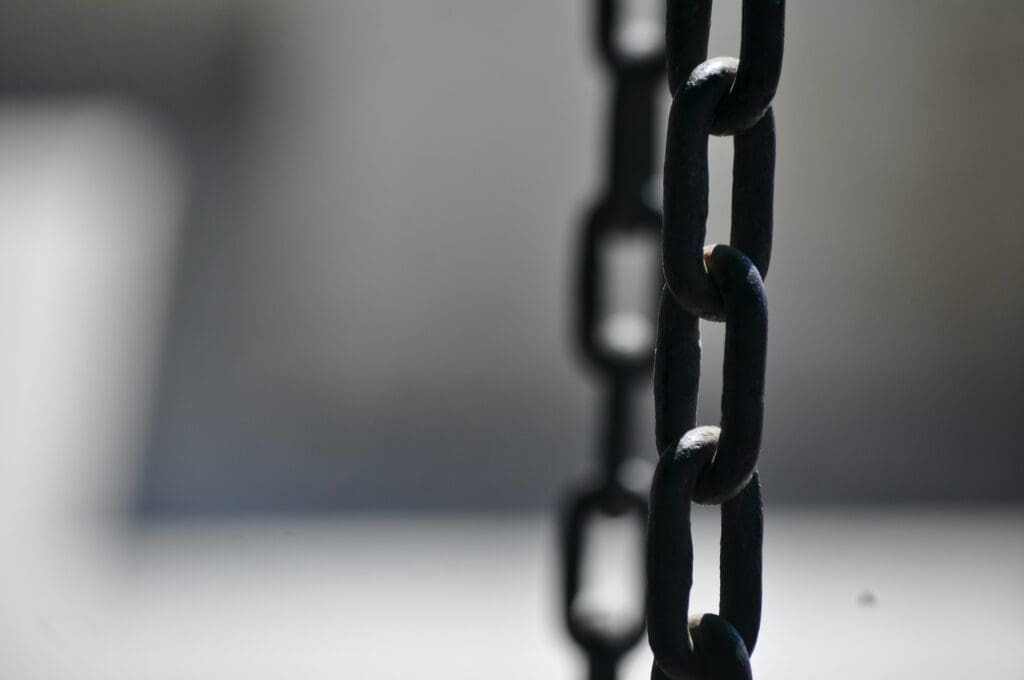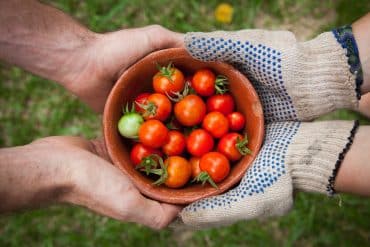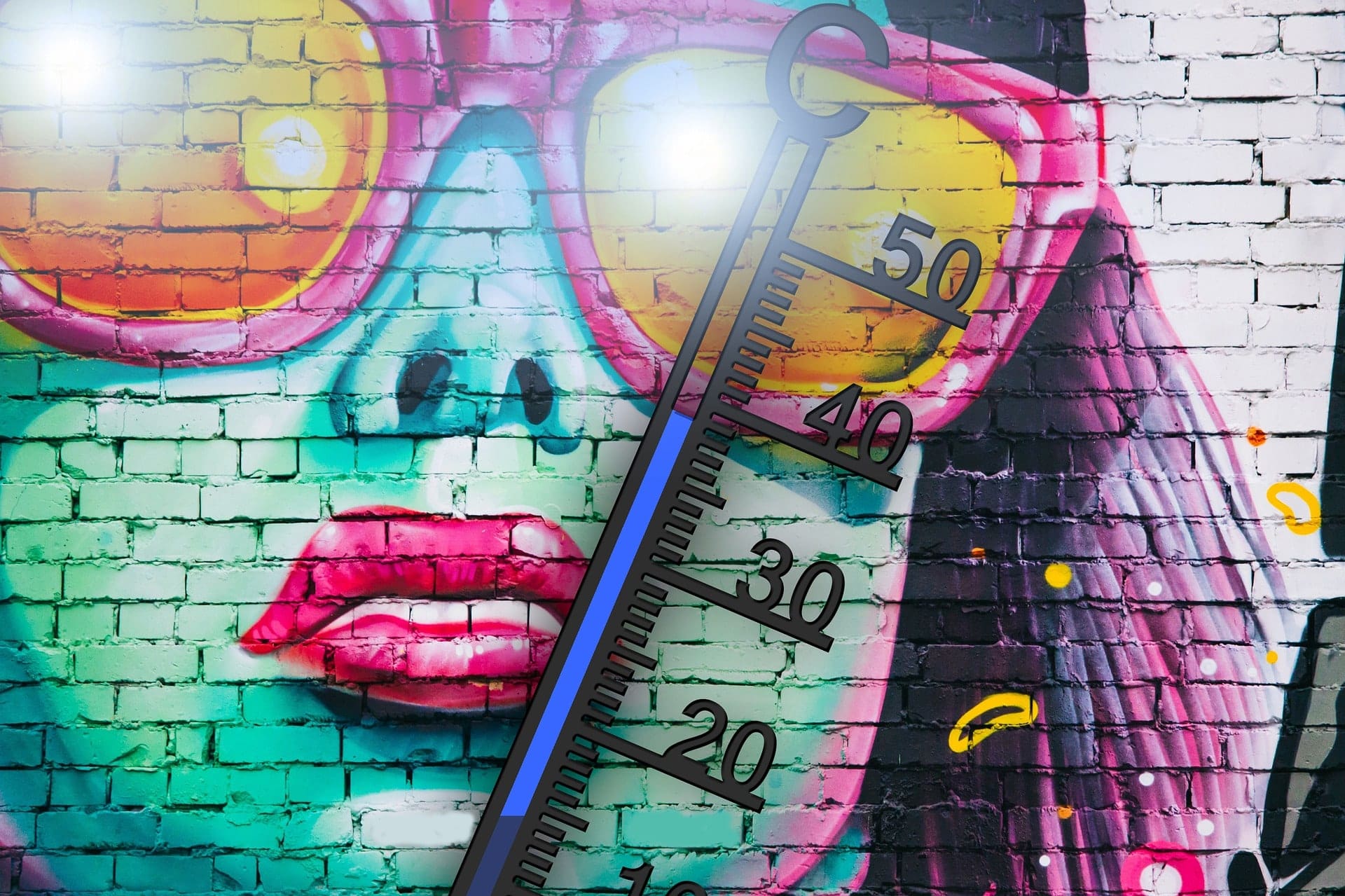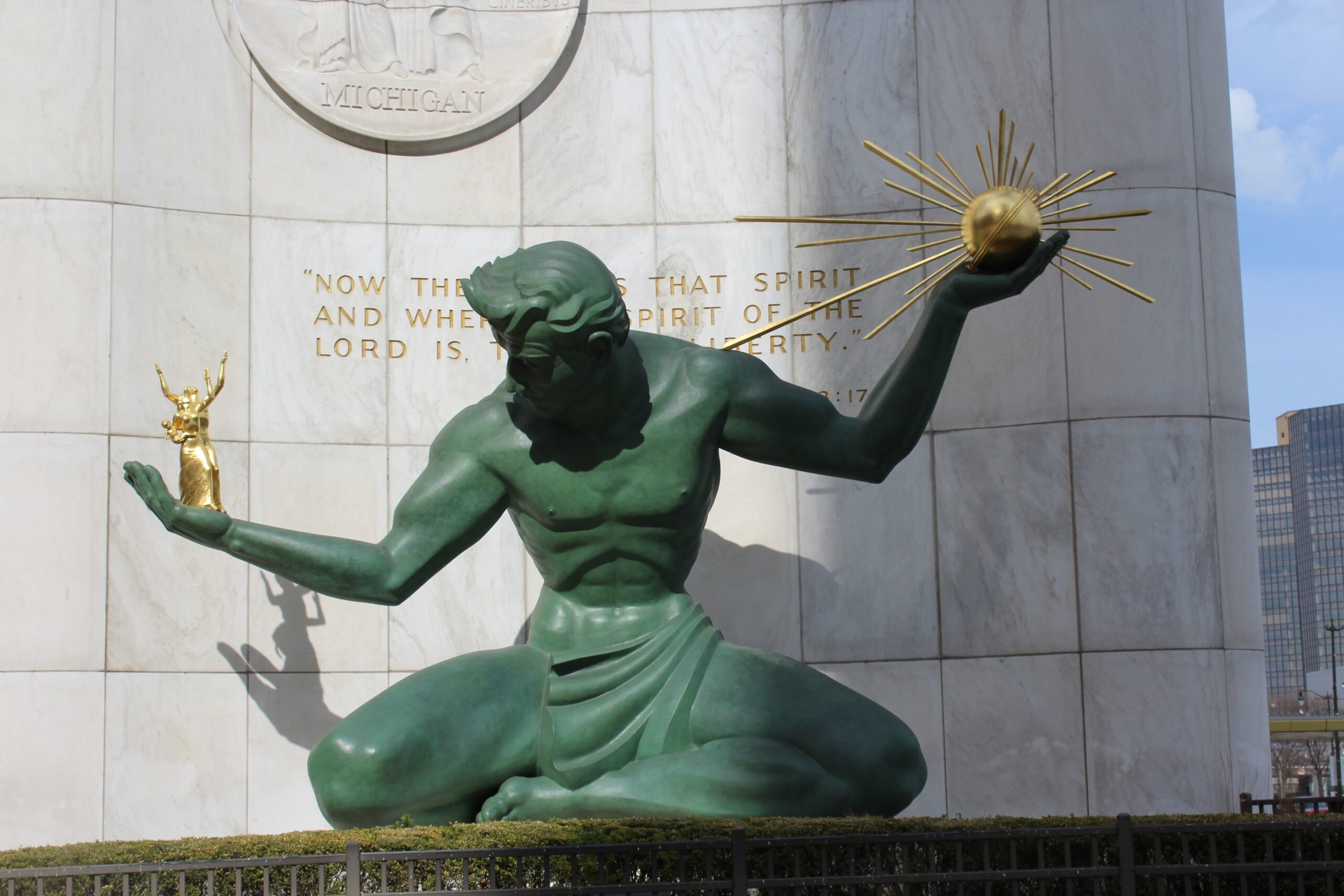New Palace Bakery and Other Fuzzy Memories of Detroit
Author’s Memo
This essay has been a longtime in the making. On some level, it grew out of my personal experience researching Black history museums as a sociology graduate student; but in reality, it began a lot earlier, maybe even before I was born. As a Black woman studying the representation of histories of racial violence at museums, my research has always felt extremely personal even though my training taught me to check that in my writing. But there’s no denying that as I toured one museum after another across the country, interviewing directors, curators, and tour guides, I often had trouble locating myself in the exhibitions. I turned to autoethnography to consider how the pat stories we tell about who we are (and where we come from) often leave out the messy bits that would resonate more strongly with more people.
‘On some level, it grew out of my personal experience researching Black history museums as a sociology graduate student; but in reality, it began a lot earlier, maybe even before I was born.
This was clearest to me during my visits to the Charles H. Wright Museum of African American History and Culture in Detroit, MI. It’s one of the largest and oldest Black history museums in the country, founded in 1965. It was special to me for other reasons too: my parents had their first date around the corner from it, and I was born at the Hutzel Women’s Hospital a few blocks away in the opposite direction. Detroit looms large in our collective psyche, and larger in my own even though I didn’t actually grow up there.
In “New Palace Bakery and Other Fuzzy Memories of Detroit” I discuss the role of place, real and imagined, in the making of Blackness and in shaping stories that we tell each other about who we are even when we know we’re not telling the whole story because we can’t quite get our hands around it. During multiple visits to Detroit, and the small Polish town nearby where my mother is actually from, I realized I was feeling strangely attached to this city I didn’t actually know that much about and hadn’t spent much time in. But it had a stronger hold on me than the museum exhibitions I was meant to identify with. This fieldwork was always personal. It was always a family affair.

New Palace Bakery and Other Fuzzy Memories of Detroit
Introduction
‘Where are you from?’ Sometimes I say nowhere in particular, but most of the time I go with Detroit. I was, after all, born at the Hutzel Women’s Hospital one mile away from the Detroit Institute of Arts where my parents had their first date in 1969. My father operated a forklift at the Chrysler automotive plant. He had moved north from Alabama for the much-touted factory jobs available to Black men. My mother was a clerk in the Marriage Records Department at the City-County Building. She worked in Detroit because most of the jobs in Hamtramck, the small Polish town nearby where she lived and grew up, were for whites only. I’ve been an audience for my mother remembering Detroit and her childhood in Hamtramck that my memories are hard to distinguish from hers.
‘Where are you from?’ Sometimes I say nowhere in particular, but most of the time I go with Detroit.
Yet, I have few sharp memories of the city because I was still in diapers when my family left. My father had enlisted in the U.S. Amy and received his first orders to relocate to Fort Bliss, Texas. Eventually, when I was seven years old, we spent two years living in Hamtramck while my father was abroad in Germany. That period stands apart from other childhood memories because we met family members I thought lived inside the telephone or who existed only as characters in my mother’s stories. For those two short years, I formed memories that seemed to magically meld with hers, attending the same school as she had and walking up and down Joseph Campau Avenue visiting the shops and bakeries just as she had with her mother in the 1950s and 60s.
So yes, sometimes I say I’m from there because it feels more like what people have in mind when they ask that question. At least it’s an easier answer than the military bases strewn across the country where I actually grew up but can no longer return.
Someplace Like Home
Detroit is someplace like home, so naturally I had mixed feelings about going back. I was in graduate school working on a dissertation about representations of racial violence at history museums. My sister, only two years older and also a graduate student working on her MFA, accepted my invitation to join. We both felt like we were doing something important and were returning, not so much to the scene of a crime, but the scene of a lie: “So much has changed,” Angie said wistfully even though neither of us had ever been there.
We weren’t actually returning to anyplace we had been; we had heard, read, and seen enough programming about Detroit as an urban mecca and then a hotspot for rioting and then as a city beset with economic woes in the aftermath of deindustrialization and ‘white flight’ to the surrounding suburbs. Still, we were confident that the casinos and the electronic music festival we stumbled upon downtown were new additions. Or were they? We didn’t actually know when or how Detroit had changed from our fuzzy memories of it. We were the new additions.
‘Detroit is someplace like home, so naturally I had mixed feelings about going back.
I had funding to visit the Charles H. Wright Museum of African American History, one of the first Black History museums in the country. We were both more curious about the city itself, and keen to travel to Hamtramck to see Evaline Street where we had lived above our grandmother in a duplex with a large front porch. It’s now a vacant lot. And our grandmother, Julia, died many years earlier. We took pictures anyway. Dickinson Elementary School was still standing, and I was strangely feeling relief. We sat on its steps and told stories about Halloween parades, powdered doughnuts, and Mrs. Penick. Our shared reverie was brief, perhaps because we were too aware that we were dabbling in the sort of nostalgic rendering of home that our actual childhood undid. We took pictures anyway.
Touring Memories of Detroit
Touring the museum was a lot like touring Detroit, a city that looms as large in my mind as NYC does in most. The Motor City is a cultural thing that strikes a chord. Sometimes it strikes a nerve. It is often presented as an economically devastated or even ruined city far removed from its industrious heyday struggling to rebuild and rebrand. At other times, it signals a particular type of gritty Blackness: a rebellious swagger respected and even coveted by some, while feared by others.
And then there’s the flashiness of the city: the shiny spinning rims, gold teeth crowns, and Cadillacs. When I say I’m from Detroit, I see flashes of recognition, or rather misrecognition. They attempt to locate me within what they think they know about a place I’m only sort of from. ‘Oh, not that Detroit,’ I think but never say given the thinness my claim to begin with.
‘Touring the museum was a lot like touring Detroit, a city that looms as large in my mind as NYC does in most.
When I am from Detroit, I’m from a different, but no less imagined place. That one consists of a mixture of those shared accounts with those of my parents, what I’ve seen and read about in books and on television, and my own vague memories, impressions, and sensations. All of these images came to bear as my sister and I walked down Woodward Ave into Hart Plaza toward the Detroit River. I felt as though I had some intimate connection to the city. It felt comfortably foreign. Not quite the stuff of nostalgia.
At the museum, Angie and I encountered another set of collective stories we had both heard just as many times as the more personal ones our mother tells about her youth. A Black history museum is a type of identity-driven museum. It showcases the experiences of Black people in the US through a story that typically starts with enslavement on the West Coast of Africa and ends with long-fought for and eventually granted citizenship in the US. What unfolds between those benchmarks – the whips and plantations, the rebellion and escape routes, the big houses and headscarves, the war, the police dogs and fire hoses, the boycotts and dreams, the losses and gains – is the stuff of American history. That’s the stuff that looms large on our collective psyche.
When I am from Detroit, I’m from a different, but no less imagined place. That one consists of a mixture of those shared accounts with those of my parents, what I’ve seen and read about in books and on television, and my own vague memories, impressions, and sensations.
I knew much of this material intimately having been raised by a child of the Civil Rights Movement and not only educated on it at schools during Black History Month. Yet, at the Wright Museum, I began to question the stories they had told me. It wasn’t the veracity that was particularly puzzling, but their ubiquity. How could it be that the same Black histories that I learned as a child were the very same ones displayed in the museums I toured in the Northeast, Southeast, Midwest, and up and down the West Coast as an adult? How could it be that they could so easily agree upon, sum up, and put on display Black experience and identity? Where were the disputes, the tangents and retractions? Where were the new additions?
Thick memories
It is common now to describe race as socially constructed, to reject any thinking that places its origins in genetics or biology rather than social arrangements. Sociologists sometimes describe racial identities as ‘thick’ or ‘thin’ to address how much (or little) they appear to shape a person’s life or organize society. They also distinguish between identities assigned by others at birth – like race and sex – and those that we assert for ourselves regardless of how others see us. The US is highly attuned to race. It shouldn’t matter, but it does and in all sorts of big and small ways. We know this. Even the people who deny this, know this. It matters whether people read you as Black or white, Asian or Latinx.
‘It is common now to describe race as socially constructed, to reject any thinking that places its origins in genetics or biology rather than social arrangements.
So yes, race is thick in the US and it’s often imposed on us by others: you are this and not that. It consists of a set of pact stories or troupes that supposedly render us intelligible, if not available, to each other. But we know a lot less about thickness than sociologists would lead us to believe. Like the history museums I visited, academic discussions treat Blackness as a weight to be endured. They seem unable to treat it as a property associated with plentiful abundance, luxuriousness, and most importantly, opacity. They seek to show us how ideas about racial difference were invented. These inventions make little sense, and do not correspond to anything remotely biological and certainly not genetic. Yet, sociologists too often present race, particularly Blackness, as somehow immobile and fundamentally painful.
The academics and curators are not alone in treating Blackness as a tragic imposition thick with suffering. Blogs, newspapers, memoirs, and magazines are chockful of stories about racism, discrimination, fear, police brutality, racial profiling, and on and on. It’s not so much that these are untrue. Sadly, they’re not. The issue is that Blackness too often gets reduced to these grim sightings alone. It is too often presented as a social problem to feel bad about, a condition to overcome, an experience to acquaint oneself with so as to be less racist, exclusionary, or otherwise toxic. There’s nothing boring or predictable about being (or feeling) Black in America, so why do so many representations of it lack wonder and surprise?
Remembering a Shared Life
This is a question about how we share. In sociology we regularly speak of shared memories, shared pasts, and shared identities. What does it mean to share an identity? Is this even possible? Our heightened awareness of identity as something under threat, as something that can be stolen, that we can somehow be defrauded out of is not dissimilar from separate conversations about cultural appropriation. In both cases, identity is seen as being shared, but in the wrong way. We want to keep our identities to ourselves, to stay in control over which parts might be shared with particular others under certain conditions. My identity is mine, but it only makes sense in relation to yours.
I am thoroughly Black, but my life and my memories are not thickly coated in race, at least not how people might expect. It is the opaquely dense qualities of Blackness that hold the greatest mysteries, qualities that are ultimately unknowable so murky the waters are between each of us. My selfish desire for Blackness inverts popular conceptions that treat it as burdensome or shameful, a regrettable product of history.
In sociology we regularly speak of shared memories, shared pasts, and shared identities. What does it mean to share an identity? Is this even possible?
To be selfish about one’s difference – to define it for oneself however thick and assigned it might be – is to disrupt the logic that race operates only as a violent tool of oppression. To think of it as something other than an identity that we would gladly shed if only we could. Even more, I resist the impulse to ‘revise and resubmit’ what has been said about being Black beyond insisting that my experience is different in ways that matter too.
When I write, teach, and talk about race, I’m always saying ‘I don’t know exactly what this is, but it’s not what you think.” I’m less interested in offering correctives than I am in asking questions about our longing for stories that locate us – where are you from? – in tight spaces that ultimately illuminate little. The thing about Blackness is that it comes with social expectations that sometimes feel like rigid stage directions from an unknown author. After all, most of our lived experiences of any social category are infinitely more complex and mysterious than sociologists would have us think.
Watching My Mother Remember
Some of my least favorite trips are those down memory lane. Yet, visiting Detroit, I realized it’s not the past, but the lane itself that irks. It is too often straight and narrow, overrun with signage over-directing us, telling us when to speed up and when to coast.
A few years ago, my mother suggested a trip back to Detroit and asked me to join. It was my first time back since graduate school. The line between her memories and mine were becoming ever more refreshingly blurred as I followed her around the city, absorbing her familiar stories afresh against the backdrop of a city that felt like an ex-boyfriend I once knew intimately but could now hardly recognize. “Is that the Renaissance Center, or is it that one?” I asked. We went up to the Marriage Records Department where she worked – now the Marriage and Death Records Department – she boasted that the building had some of the first escalators in the city.
“Have you ever seen escalators in a city building? No, only elevators,” she asked and answered. She led me to the site of the original Hudson’s Department Store on Woodward Ave, and then to Fox Theater where she had seen the Supremes and Temptations perform live. Before we had even made our way to Berry Gordy’s recording studio on Grand Boulevard, now a buzzing museum. I was visiting feisty Motown this time around, not the Motor City where jobs had come and gone.
A few years ago, my mother suggested a trip back to Detroit and asked me to join. It was my first time back since graduate school.
The present is just as imagined as the past, and it was all wonderfully scrambled as we traveled through downtown noting the new as much as the old. We took psychic liberties with the strangers around us by locating them in the past as much as the present. The happy disorientation continued as we traveled to the Wright Museum. My mother wanted to walk through the rotunda where, one year earlier, Aretha Franklin’s glittering gold-plated casket was on display for onlookers to have one last chance to view of the legend, reposed with arms and legs crossed in a cherry red dress with matching heels. “Ma, I wrote about this museum in my book, remember?” I asked, but she was more interested in imagining the casket, the red heels, and the crowds that weren’t there. “Robyn, do you think they played her music during the service?”
They must have, I told her.
Afterward, we drove to Hamtramck, which is no longer a majority Polish-American enclave. Detroit still surrounds it, but in 2013 it became the first U.S. city with a majority Muslim population and a few years later the first with a majority Muslim city council. I remember the initial signs of this demographic shift. As a child, overheard snippets of conversations between grownups whispering about the “Arabs moving in” during those two short years we lived there in the 1980s. Along Joseph Campau Ave there is now the Polish Art Center, the Ukrainian American Archives & Museum, the Islamic Center of Hamtramck, a mosque, and Pope Park featuring a foreboding statue of Pope John Paul II. “None of this was here before,” my mother said with the palms outstretched in amazement. “Everybody knew this was a Polish town so they didn’t need parks and centers to prove it.”
‘We took psychic liberties with the strangers around us by locating them in the past as much as the present.
Before entering the New Palace Bakery, we oohed and aahed at the pastries arranged in the storefront window. My mother still insists that Polish bakeries serve the best cinnamon rolls and jelly-filled doughnuts, or pączkis. She ordered both while I opted for the cebulaki (onion rolls) and a slice of poppy seed cake. The clerk fetched her mother when mine shared her relief that the bakery was still standing, unchanged. Like a sweet museum. “Oh, a lot has changed here. We’re not as busy as we used to be. Too many of our people left the city,” the shop-owner said with a judgmental tone.
How strange that this older white woman felt comfortable accusing an older Black woman of abandoning a racist town where she had glass bottles hurled at her and had been refused employment. Then again, I didn’t quite know who ‘her people’ were in the first place. My mother? Me? Had we somehow been swept up into the imagined ‘we’ of a Polish past because we didn’t appear part of a current Muslim majority?
‘Then again, I didn’t quite know who ‘her people’ were in the first place. My mother? Me?
Hamtramck is more than the Polish bakeries, racist sneers, and segregated parks of its past, and more than the mosques of today. To reduce it to such would be to flatten or thin its history and my mother’s and my own, however opaque with imagination. As we headed back to our hotel in Detroit, I thought again about how little I knew of this place I sometimes call home.
It’s not so much that there’s a ‘real’ Detroit that escapes me because I’m not quite from there. None of us know the magic and vitality of this place that defies narration. Detroit is uniquely transfigured in our psyches. I tell people I’m from Detroit because they want to know something about me, and responding ‘I’m not sure’ or ‘no place in particular’ feels like I’m withholding, like I’m batting away a hand reaching toward me. That outstretched hand is an act of protection as much as an invitation. We all long for answers, especially about the things that disturb us most: who are you, anyway?
Credits
Image of a chain by Hussain Badshah for Unsplash
Featured Image By Jason Hutchison for Unsplash
Learn More
New to autoethnography? Visit What Is Autoethnography? How Can I Learn More? to learn about autoethnographic writing and expressive arts. Interested in contributing? Then, view our editorial board’s What Do Editors Look for When Reviewing Evocative Autoethnographic Work?. Accordingly, check out our Submissions page. View Our Team in order to learn about our editorial board. Please see our Work with Us page to learn about volunteering at The AutoEthnographer. Visit Scholarships to learn about our annual student scholarship competition.
She is a writer and professor of sociology at Wesleyan University in CT. She is the author of Desegregating the Past: The Public Life of Memory in the United States and South Africa (2017). Her general audience writing has appeared in The Atlantic, Aeon, NBC NEWS, Psyche, and Public Seminar.










